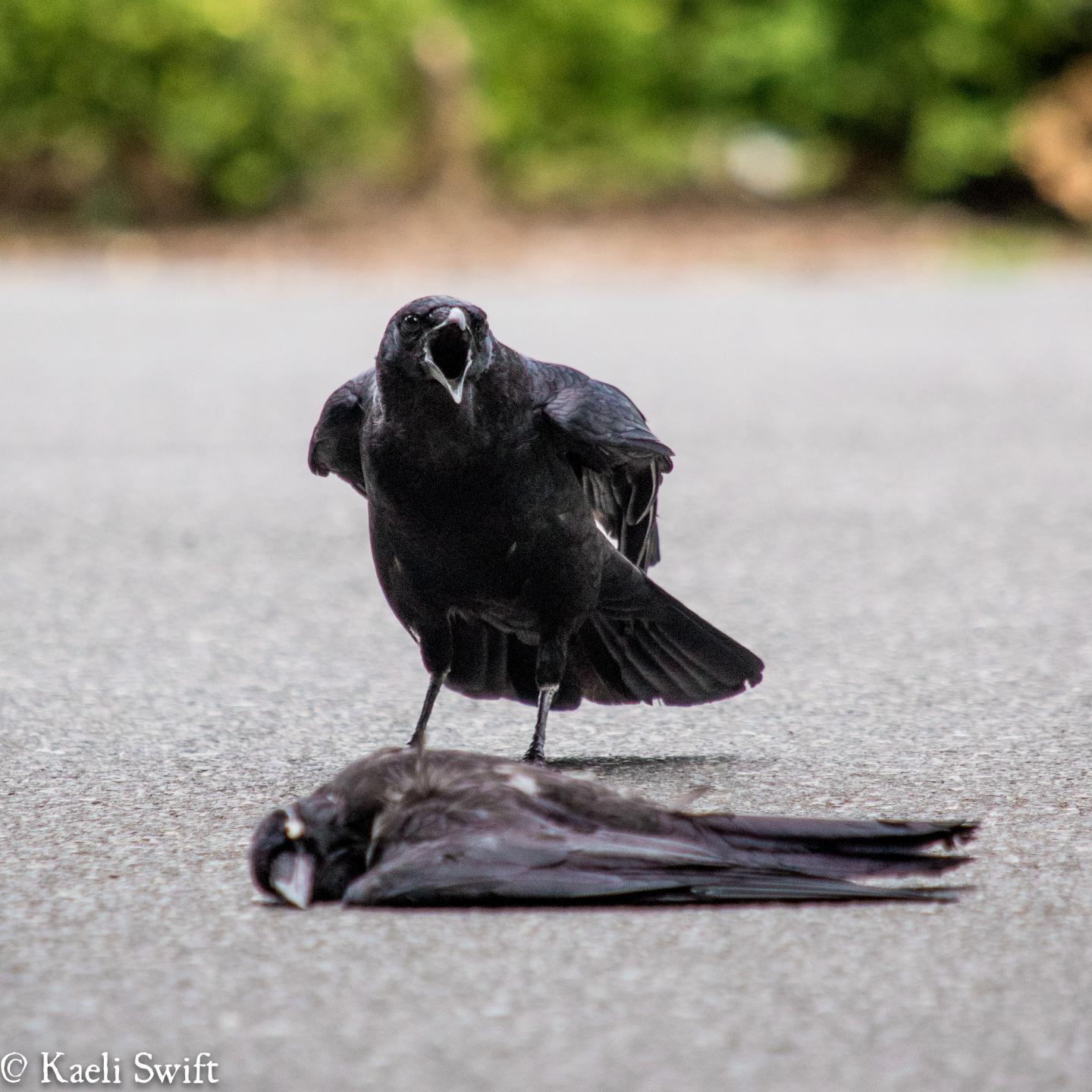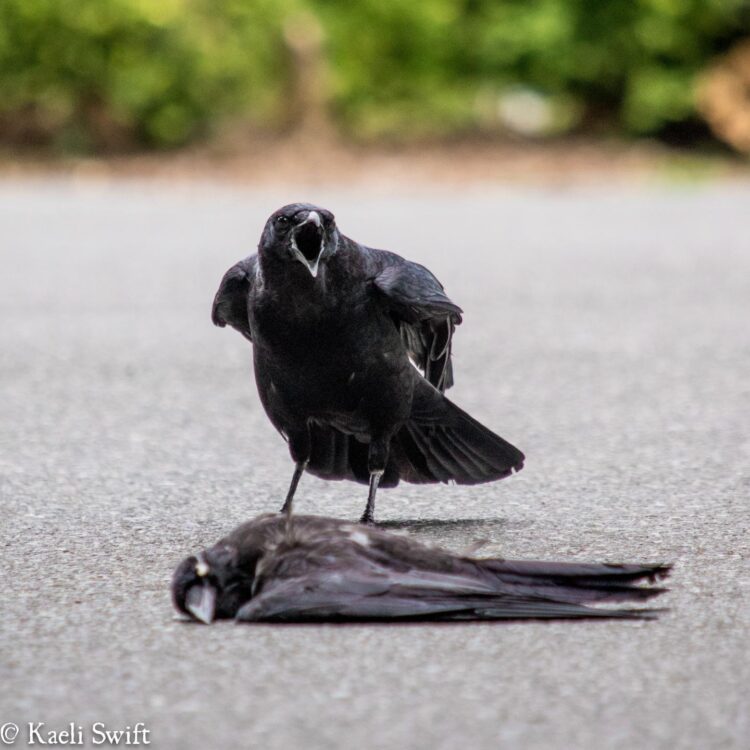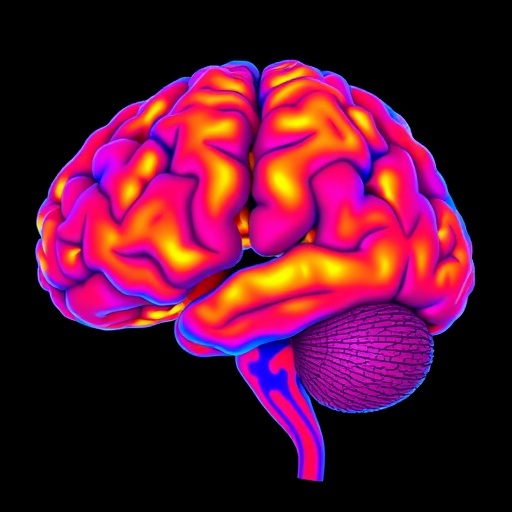A review ranging from frogs and wolves to lobsters, bats, and humans

Credit: Kaeli Swift
Humans are not the only social animal struggling with new infectious diseases. When Hamilton College Associate Professor of Biology Andrea Townsend began studying the social behavior of American crows, her work was complicated by West Nile virus, an emerging disease with devastating effects on crow populations. Her research pivoted to investigating the effects of disease on crow social behavior. “It made me wonder how social animals should, in general, respond to novel diseases,” Townsend said. “Do other animals ‘socially distance’ during disease outbreaks, like humans during the COVID-19 pandemic?”
Joined by evolutionary psychologist Keelah Williams (Hamilton College) and disease ecologists Dana Hawley (Virginia Tech) and Jessica Stephenson (University of Pittsburgh), Townsend reviewed studies of species ranging from frogs and wolves to lobsters and bats to examine responses to emerging diseases across the animal kingdom. The review, “Emerging infectious disease and the challenges of social distancing in human and non-human animals” is published in the Proceedings of the Royal Society B and accessible at https:/
They found that some social species appear to become less social after the emergence of new diseases, but others do not, with responses depending on the importance of these social interactions for each species and the ways in which the diseases are transmitted.
Emerging infectious diseases present a particular challenge for social species because their specific symptoms can be unfamiliar. However, as this review shows, many animals use general cues that might be typical for any disease, like lethargy or unusual appearance, allowing them to respond rapidly to novel pathogens. This overgeneralization of “infection cues” has a downside: it can lead to hypervigilance, particularly when an individual perceives itself to be vulnerable to disease. Across species, infectious disease pressure can increase differentiation among social groups (i.e., ingroup-outgroup awareness); in humans, it can lead to xenophobia and aversion to “foreign others.”
In all species, reducing sociality has costs. Social isolation in humans might reduce the risk of COVID-19, for example, but human loneliness has been linked to an elevated risk of non-infectious disease. Solitary gorillas may be less likely to contract Ebola, but might experience higher risk of predation and infanticide. Less aggressive Tasmanian devils may be less likely to contract transmissible cancer from other devils, but may miss out on mating opportunities. Therefore, changing social interactions might not be a sustainable long-term response to infectious disease in all species.
Does technology help when it comes to dealing with social distancing? The evidence is mixed. Social media, for example, can increase loneliness by making observers feel “less happy” by comparison, exacerbating perceived social isolation. In contrast, however, synchronous virtual communication platforms could maintain or even enhance some of the benefits of sociality for humans, buffering us, to some extent, from the negative health effects of perceived isolation and giving us a unique advantage over other animals during periods of social distancing.
###
Media Contact
Andrea Townsend
[email protected]
Related Journal Article
http://dx.





